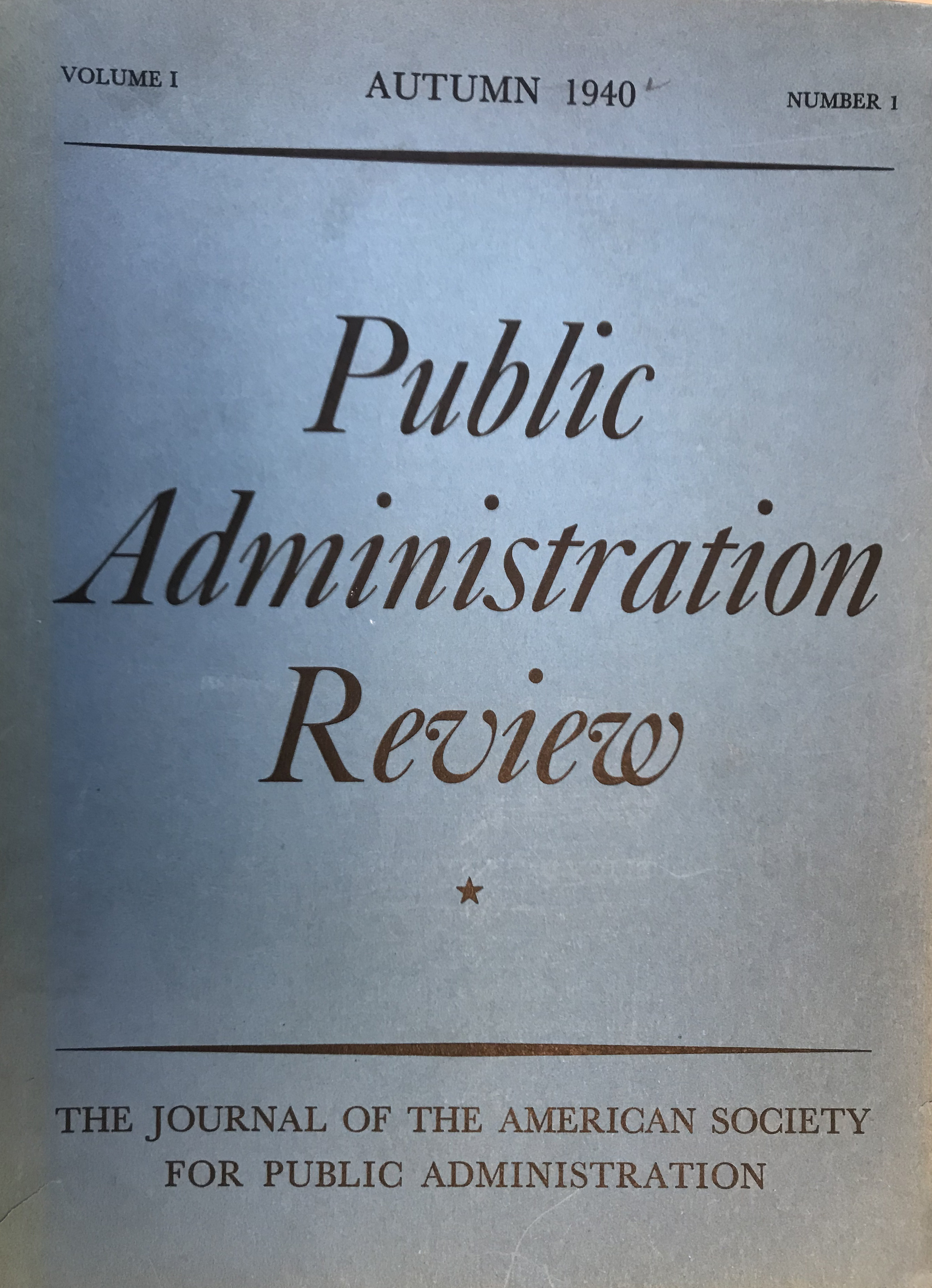
Autumn 1940 was an entire year prior to the United States' entrance into World War II—which is why the first article in the first edition of Public Administration Review (PAR) refers to "the World War," with no specificity regarding which one.
It is with this step back in time that we are reminded of exactly how different our world was in 1940—which was not only the inaugural year for PAR, but also was just one year after ASPA was founded. William Mosher served as ASPA President and Leonard White was the PAR editor-in-chief.
Recently donated by long-time ASPA member Jim Brunet, this volume has many stories to tell beyond the articles included. Franklin Delano Roosevelt was president; the Burlington Railroad was in its heyday; the Civil Service Commission was alive and well; and Fiorello La Guardia was mayor of New York City.
More telling are some of the issues under discussion. National defense plays a prominent role for obvious reasons; so does city planning. The edition features an extensive biographical sketch of W. W. Stockberger, one of the first and most important personnel directors at the federal level, as well as an essay regarding the importance of research and planning as they relate to administration and management.
Book and document reviews reflect on The President: Leader and Manager, Canadian federalism, "Toward a Science of Administration," political economy, group research and "administrative autonomy." "Contemporary Topics," listed in the back, include accounting and budgtary revision, reorganization in Kansas City, municipal leagues in Latin America, international cooperation, rural housing, Attorney-General's committee, Los Angeles charter revision and more.
One can still find this kind of content in a current edition of PAR. Certainly, articles and research focus on personnel management, appropriate city structures, profiles of leadership, government agency structure and efficiency and more. But, as is the way with all publications that maintain their credibility over time, sizable changes have been made in terms of issue coverage, authorship, depth of research, length and more.
Authors in this inaugural edition, and Mr. White, would most certainly be proud of how far the journal has come since Autumn 1940. Who knew they were starting a tradition that would be alive and thriving 80 years later? And who knows where today's PAR will be as we near 2099? Barring medical miracles for most of us, our archives will have to tell the tale.